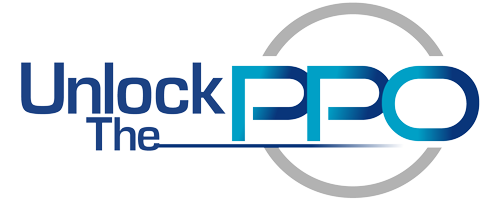PPOs 101
 Sometimes we get calls from new dental school graduates or dentists getting ready to buy their first practice and they have questions about how PPOs work. Insurance seems to have a language of it’s own and if you are looking to learn the jargon, here’s the basics:
Sometimes we get calls from new dental school graduates or dentists getting ready to buy their first practice and they have questions about how PPOs work. Insurance seems to have a language of it’s own and if you are looking to learn the jargon, here’s the basics:
When you are In-Network with a PPO you are considered a “Preferred Provider” with them. You sign a contract stating that you agree to a specified fee schedule which is lower than your regular fees. In exchange for the discount, the insurance company promotes your practice by listing you as a Provider with their customers (your potential patients). You will be subject to reimbursement based upon the rules of the plan including a yearly maximum of benefits, the potential waiting period on some services and frequency limitations. Depending on the state you practice in and the type of policy involved, many insurance companies require the dentist to adhere to the negotiated fee even if it pertains to a non-covered service or the patient’s yearly maximum has already been paid out. This is important for procedures such as veneers, implants or ortho because the policy may exclude coverage but will still prohibit you from charging the patient your regular fee. It is important that you know which procedure codes your office utilizes the most as those are the fees you will assign most priority during fee negotiations. If you are unsure if your state allows you to charge for non-covered benefits visit our blog on this topic.
Third party administrators are another piece of the puzzle. Companies like DenteMax or Connection Dental are third-party administrators that a dentist can contract with but are not insurance companies themselves. If you sign on with a third party administrator you are agreeing to be in-network under that fee schedule for any insurance companies who have an agreement to use that third party administrator's fees. Third party administrators can be a good option for some offices but be sure you understand the exposure you will have with various companies before signing on.
Assignment of Benefit means that the patient has agreed to have their benefit check sent directly to your office and you, as the dentist, agree to accept their benefits from the insurance company. If you are a Preferred Provider, the insurance company will automatically send you the check. If you are not a Preferred Provider, most insurance companies will still allow you to accept AOB even on an Out-Of-Network basis. Patients often prefer this option because the dentists wait for the insurance check rather than the patient. Some insurance companies will not send the check directly to the dentist for out-of-network claims.
If you choose not to become a Preferred Provider yet provide services for a patient utilizing their benefits, that insurance company will consider you to be an Out-Of-Network Provider. As an OON provider, you will bill your full fee to the insurance company and they will pay their designated percentage typically based on UCR (Usual and Customary). UCR is considered the maximum allowable charge the insurance company will consider for a service. So even if there is 100% coverage on a code, they will still pay up to a particular amount which is their designated UCR. Be aware that UCR is different depending on your area and each insurance company. Some employers also choose a higher UCR level when purchasing an upgraded plan so even with the same insurance company you may see different UCRs depending on the policy. When your fee exceeds the insurance company’s UCR you may then bill the patient for the difference between UCR and your fee. This is another area we examine with our services as we want your practice to fall close to UCR with the procedure codes that matter the most. While most policies are paid based on UCR, be aware that there can be downgrades to plans for seeing out-of-network providers so researching benefits on top employer plans in your area is important.
In a totally Fee-For-Service practice, the dentist chooses to collect payment in full from the patient at the time of service. The patient then submits a claim form to the insurance company and the insurance company pays any due benefits directly to the patient. The dentist is paid directly from the patient, not the insurance company.
There are benefits and restrictions with all models of practicing dentistry. To see a quick pro and con listing visit our PPO vs Non-PPO page. You may also contact us toll-free at 855-327-9125.
